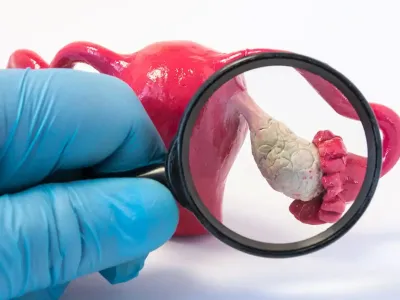
In this article, we will explain the characteristics of urinary tract infections, a challenge that many women have faced at some point in their lives but may not have had the opportunity to learn exactly what causes it.
Contents
What Every Woman Should Know About Urinary Tract Infections
We will examine the key points that every woman should know about urinary tract infections, including:
- Anatomical and other conditions that contribute to the occurrence of urinary tract infections in women.
- The increased frequency of urinary tract infections during the summer months.
- The symptoms of urinary tract infections and how they are diagnosed.
- The various treatment options that are available.
- Ways to prevent urinary tract infections.
- Recurring or relapsing urinary tract infections.
Why Women Get Urinary Tract Infections More Often: Anatomical and Other Common Factors
The anatomy of a woman is one of the main factors contributing to her susceptibility to urinary tract infections. Specifically, the short length of the female urethra (~4 cm, compared to the male ~14 cm) and the short distance from the vagina and rectum, increase the likelihood of bacterial transmission to the urinary bladder.
Additionally, other factors that can contribute to the occurrence of urinary tract infections in women are menopause, which can alter hormone balance, and sexual contact, which can facilitate bacterial transmission to the urethra, increasing the risk for urinary tract infections.
Summer Urinary Tract Infections
In the summer, conditions and activities that accompany this season can increase the likelihood of developing urinary tract infections. The sea, the beach, and swimming pools, as well as increased sexual activity during vacations, can increase the risk of bacterial transmission to the urethra.
High temperatures, dehydration, and delayed urination are also contributing factors.
The Dominant Pathogenic Factor
The most common bacterium causing urinary tract infections is Escherichia Coli, which originates from the intestinal flora and accounts for 75-95% of urinary system infection cases. This bacterium has special proteins that allow it to 'stick' to the cells of the urinary system, specifically the urethra and the urinary bladder. This attachment gives it the ability to resist even the flow of urine that could mechanically remove it.
Urinary Tract Infection Symptoms
Urinary tract infections can cause various symptoms. The symptoms of urinary tract infections depend on and are proportional to the point which has been affected by the microbes and often coexists with Sexually Transmitted Diseases.
Cystitis Symptoms
Cystitis, the infection of the urinary bladder, can cause frequent urination (frequent desire to urinate), dysuria (pain during urination), and hematuria (blood in the urine). Also, women often report a constant feeling of heaviness in the abdomen and urine that may be cloudy or smell bad.
Pyelonephritis Symptoms (upper urinary tract)
Pyelonephritis, an infection of the upper urinary system affecting the kidneys, can cause more serious symptoms such as malaise and fever. Pain in the anatomical area of the kidneys is also characteristic.

Diagnosis of Urinary Tract Infections
The diagnosis of a urinary tract infection can be clinical and/or laboratory-based.
Clinical Diagnosis Based on Symptoms
The doctor can diagnose a urinary tract infection based on the symptoms described by the patient.
Laboratory Tests
Laboratory tests, such as a general urine analysis and urine culture, can help confirm the diagnosis and determine the appropriate antibiotic for treatment.
Treatment of Urinary Tract Infections
The treatment of urinary tract infections depends on the severity of the infection and the pathogenic microorganism causing it.
Empirical Treatment for Simple Cases
Empirical treatment is the first line for treating urinary tract infections and usually involves administering antibiotics. Common antibiotics used for treating urinary tract infections include nitrofurantoin and cephalosporins. These drugs are effective in combating bacteria that cause urinary tract infections and usually have few side effects.
The duration of treatment may vary depending on the severity of the urinary tract infection but usually lasts from 3 to 7 days.
It is important to complete the antibiotic dosage regimen, even if symptoms subside, to ensure that all bacteria have been eliminated. Otherwise, the more resistant strains of the microbe survive and eradication becomes even more difficult.
Antibiotic Sensitivity-Based Treatment
In cases where the urinary tract infection recurs or does not respond to initial treatment, a more targeted approach to treating the urinary tract infection is necessary. This means that the patient receives appropriate antibiotic therapy based on the results of the antibiogram.
Urinary Tract Infection During Pregnancy
A special category of patients is pregnant women. Urinary tract infection during pregnancy is always treated, regardless of symptoms, as pregnancy complications such as preterm birth are more common in pregnant women with urinary tract infections. More topics related to pregnancy can be found HERE.
Importance of Antibiotic Resistance Prevention
Antibiotic resistance is an increasing challenge in medicine, especially in Greece, and can make the treatment of urinary tract infections more difficult. It is important to use antibiotics responsibly, to strictly follow the treatment, and to avoid unnecessary use.
Prevention of Urinary Tract Infections
Adequate Fluid Intake
Consuming enough water or other fluids can help prevent urinary tract infections, as it facilitates the removal of microorganisms from the urinary system.
Regular Emptying of the Bladder
It is important not to delay urination for long periods, as this can create an environment that favours the growth of microbes and is one of the most common risk factors for urinary tract infections.
Cranberry Juice Consumption
Cranberry juice has been shown to help prevent urinary tract infections, as it contains ingredients that prevent the attachment of microorganisms to the walls of the urinary system.
Supplements Containing Mannose
Mannose is a type of simple sugar that has shown promising results in the prevention and treatment of urinary tract infections. This is due to its ability to prevent the attachment of E.coli bacteria to the cells of the urinary system.
Immediate Urination After Sexual Intercourse
Urination after sexual intercourse can help remove microorganisms that may have entered the urinary system.
Proper Cleaning Technique After Defecation
The correct cleaning technique after defecation is always front to back.
Caution in Sand, Sunbeds, and Pools
It is important to be cautious about hygiene in public places such as beaches and pools, where microorganisms are more likely to enter the urinary system.
Comfortable Cotton Clothes and Avoiding Wet Swimsuits
Cotton clothes allow the skin to breathe and stay dry, while wet swimsuits can create an environment that favors the growth of microorganisms.
Recurrent Urinary Tract Infections
Definition and Indication for Further Evaluation
Recurrent urinary tract infections are those that reappear after completing treatment. If this happens, further evaluation may be necessary to determine the cause of the recurrence.
Additional Tests: Ultrasound, Cystoscopy
In the case of recurrent urinary tract infections, additional tests such as ultrasound or cystoscopy may be necessary to examine possible causes. In this case, a collaboration between a gynecologist and a urologist has been shown to have better results for the patient.
Possible Chemoprophylaxis with Long-Term Antibiotic Therapy
In some cases, long-term antibiotic therapy may be recommended for the prevention of recurrent urinary tract infections. This approach, known as chemoprophylaxis, should always be done under the supervision of a doctor, as long-term use of antibiotics can lead to resistance.
Sources:
https://www.mayoclinic.org/diseases-conditions/urinary-tract-infection/symptoms-causes/syc-20353447
Dason S, Dason JT, Kapoor A. Guidelines for the diagnosis and management of recurrent urinary tract infection in women. Can Urol Assoc J. 2011 Oct;5(5):316-22. doi: 10.5489/cuaj.11214. PMID: 22031610; PMCID: PMC3202002.









